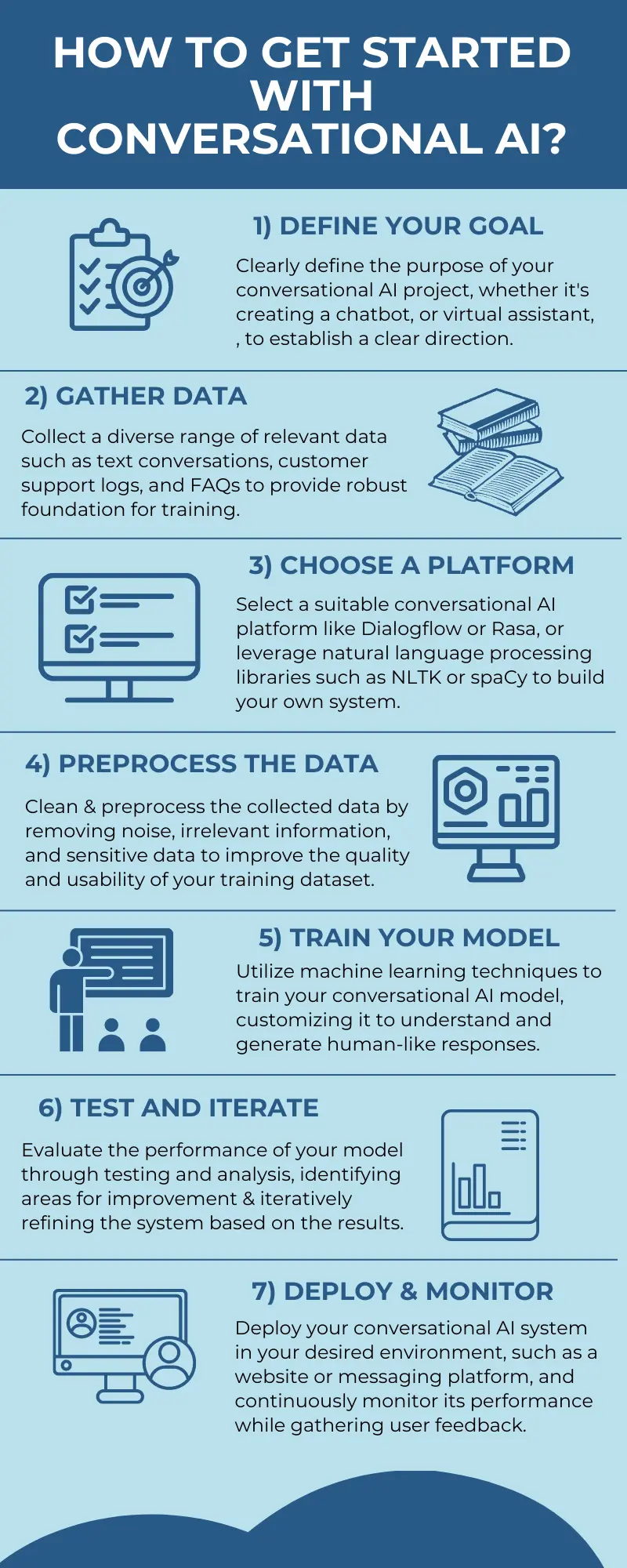Why Conversational AI is the Next Big Thing in Technology
Have you ever wished you could just talk to the technology like Conversational AI and have it respond in a way that feels natural?
Well, with the rise of conversational AI, this has already become a reality.
It refers to technology that allows users to interact with devices in a natural way instead of traditional input methods.
Conversational AI technology has numerous applications in various industries today. It is not only helping to enhance customer service by handling inquiries and providing fast support but is also increasing sales and customer engagement with the personalization of user interactions.
With the help of this, the world of technology and artificial intelligence has achieved great advancements.
Let’s get some better insights into this and how it is changing the way we are interacting with technology.
What Is Conversational AI?
Conversational AI is a kind of artificial intelligence that can stimulate human interactions. This includes chatbots, virtual assistants, and voice-activated devices.
They imitate human interactions by recognizing speech and text inputs and translating their contents into other languages using massive amounts of data, machine learning, and natural language processing.

How Conversational AI Works?
Conversational AI mainly works with two main components: Natural Language Processing (NLP) and Machine Learning (ML). NLP and ML techniques are combined with traditional, static types of interactive technology, such as chatbots, to create conversational AI. Let’s have a deeper look at this.
- Incorporating Natural Language Processing
Virtual assistants like Siri, Alexa, and Google Assistant have been developed by Incorporating Natural Language Processing into it. This technology interprets the meaning behind words enabling more natural conversations with humans and computers without just recognizing keywords. Reinforcement learning, input analysis, output generation, and input generation are the four steps that makeup NLP. Unstructured data is converted into a computer-readable format and then processed to produce the necessary response. However, underlying ML algorithms gradually increase the quality of their responses. - Utilizing Machine Learning Processes
Machine learning is yet another important component of it. Being an area of artificial intelligence, machine learning (ML) consists of algorithms, features, and data sets. The AI platform machine learning gets better at identifying patterns and employs them to create enhanced predictions as the input increases. As a result, with the help of machine learning algorithms, it can learn from past interactions with users and continually improve its responses over time. - Enhancing Conventional Interactive Technology
Enhancing conventional interactive technology is one of the areas where it is immensely aims to achieve. By offering a more human-like interaction, it aims to improve customer experience and automate repetitive tasks while providing personalized assistance to users.
Conversational AI And Chatbot
Chatbots can be powered by conversational AI to become smarter and more effective. It’s crucial to realize that not all chatbots are supported by it, though.
Only a few jobs can be completed by simple chatbots. Typically, this involves little more than responding to straightforward FAQs.
Chatbots require it to improve their comprehension of human language and to provide transactional functionality in addition to their informational skills to satisfy the needs of larger organizations.
Significance Of Conversational AI
Conversational AI technology has evolved to offer several benefits that could revolutionize future interactions between humans and computers.
Businesses worldwide are switching to it as it reduces labor costs and improves operational efficiency. Here are some important benefits of it that you must consider.
- Cost Efficiency
Incorporating this technology is essential when it comes to cost efficiency. With the use of conversational AI-powered chatbots businesses can handle a high volume of customer inquiries with ease and without the need for additional human resources. Automating routine tasks is vital as it frees up staff to focus on more complex issues that enhance staff productivity and reduces operational costs. - Increased Sales And Customer Engagement
Businesses can enhance sales and customer engagement by using it and providing personalized recommendations based on user preferences and history. Instant responses to queries and concerns through chatbots powered by this improve customer engagement. It reduces wait times in customer service resulting in overall satisfaction. - Scalability
It can handle multiple conversations at once without compromising on quality or efficiency. Furthermore, scalability enables enterprises to provide 24/7 customer support services resulting in improved buyer satisfaction and loyalty.
Challenges of Conversational AI Technologies
The development of it has brought about its own set of challenges that require resolution.
Conversational AI technology has been designed to interpret various forms of natural language inputs provided by users. However, this task is not easy due to the complexities arising from regional variations in accents, dialects, or slang.
On the other hand, this technologies also have raised substantial concerns about privacy and security due to issues related to data collection and storage.
Some Important Use Cases Of Conversational AI
- AI-powered chatbots, virtual assistants like Siri and Google Assistant, and voice-enabled devices such as smart speakers are all made possible by conversational AI.
- Another use case for this technology is language translation, personalization, and speech recognition.
- Businesses leverage it to provide better customer experiences by improving scalability while decreasing costs.
- The technology’s ability to learn from user interactions and adjust its algorithms provides promise for future interactions.
The Final Say
Conversational AI has become a game-changer in the way we interact with technology.
The incorporation of natural language processing, machine learning processes, and enhanced interactive technology has made it possible for it to collect and analyze data from user interactions, providing vital insights for informed decision-making.
However, like any new technology, conversational AI also poses some challenges, the benefits far outweigh the risks.
Need assistance with digital solutions? Get in touch with Arista Systems now!


